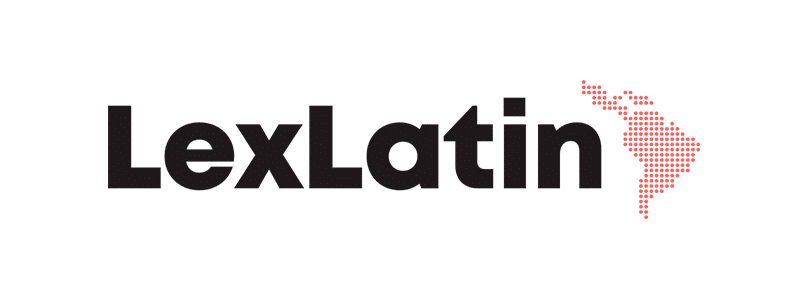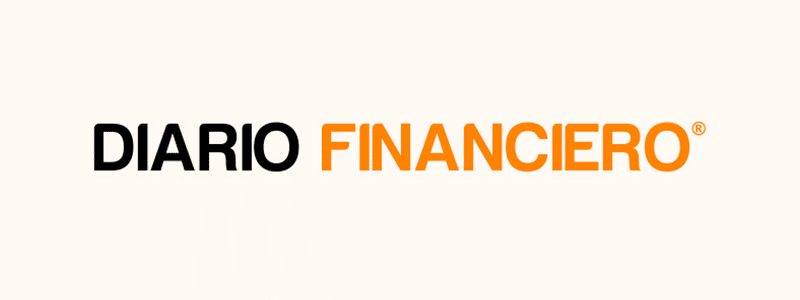Our Corporate and Business Group associate, Aileen Gorodischer, talked to LexLatin about the scope and impact of the Dividend Subsidy Law, recently enacted by the Executive.
The construction industry estimates that the unplaced housing inventory in the country exceeds 105,000 units.
The Dividend Subsidy Law, recently approved by the Chilean legislature, aims to facilitate access to mortgage credit for a greater number of middle and low-income families, as well as to try to give greater dynamism to the real estate sector which, in recent years, has suffered a sharp contraction that has led to the bankruptcy of many companies in this sector.
Promoted by the Chilean Chamber of Construction (CChC) and the national banking sector, the law seeks to reduce the percentage of monthly income that each family must allocate to the payment of their housing, since, given the difficulties that have arisen due to the increase in the interest rate for mortgage loans in recent years, many families have found it impossible to access a home of their own.
Applicable for one year, the law has been received with enthusiasm by all sectors involved, although some specialists believe that it will have little effect in efficiently stimulating the industry’s take-off as long as other obstacles that hold it back, such as the excessive requirements and permits that real estate developments and construction in general must comply with, are not resolved.
Why was this law created?
As happened all over the world, the health crisis unleashed by Covid-19 left deep traces in the Chilean economy, among them the imbalance generated by the policy of increasing interest rates to curb inflation, a measure that affected the interconnected construction and real estate sectors in a very specific way.
This increase in the cost of credit led to a sharp drop in activity in the construction industry, which has traditionally used financing to support its operations. This led to a real crisis in the industry, unleashing a wave of insolvencies and bankruptcies of companies without precedent in the country, a predicament that has not yet been overcome and which was fueled by the withdrawals of AFP funds and the monetary policy strategies applied by the government, among other problems.
Downstream, the real estate sector was directly compromised, since, consequently, the rise in the cost of credit led to a brake on the purchase of new homes, whose mortgage rates went from 1.99% in 2019, to 5.21% by the end of 2023.
“Mortgage credits are more expensive and, consequently, a higher income is required to qualify for them, thus limiting the alternatives of access to housing for people,” says Vicente Tadeo Sáez Pinochet, partner of the Santiago law firm Sáez Abogados.
In view of this situation and in order to help Chilean families, especially those in the middle and lower strata, to be able to access credit for the purchase of a home, Law No. 21,748, better known as the Dividend Subsidy Law, was passed last May.
What is the dividend subsidy?
The subsidy consists of a reduction of up to 60 basis points on the interest rate of mortgage loans for individuals, only for the purchase of new homes whose value does not exceed 4,000 Unidades de Fomento (UF), i.e., with costs of around 156 million Chilean pesos (about USD 167,000).
“This benefit will be applicable for sale and purchase promises entered into as from January 1, 2025 and will be in force for 24 months from the publication of the law”, clarifies Aileen Gorodischer, associate of the firm Albagli Zaliasnik (AZ).
The lawyer reiterates that the law seeks to facilitate people’s access to home ownership, considering the current context of high interest rates on mortgage loans, as well as the higher requirements imposed by financial institutions to grant them.
In this sense, the law establishes that 6,000 of the 50,000 subsidies that will be granted during its term will be destined to buyers of homes whose value does not exceed UF 3,000, who are also beneficiaries of the DS01 (Integrated Housing Subsidy System) and the DS19 (Social and Territorial Integration Program), aid plans granted by the Ministry of Housing and Urban Development.
But there is more: the subsidy will be granted jointly with the New Housing Support Guarantee Program, in accordance with Law No. 21,543, which instituted the Special Guarantee Fund (Fogaes), created to minimize the risk for lending institutions, with the aim of stimulating the granting of more mortgage loans.
How does it work in people’s economy?
In practical terms, when applying for a mortgage loan for the purchase of a home of up to 4,000 UF, the program establishes that the buyer will receive a subsidy of 0.6% of the interest rate (an amount that may even be slightly higher), based on the amount of the guarantee granted by Fogaes to construction companies and banks.
In other words, the guarantee added to the rate subsidy allows for a considerable reduction in the mortgage loan rate, which makes it possible to lower the minimum income threshold required by the bank, thus broadening the spectrum of people who can qualify for financing.
“By lowering the dividend, the minimum income requirements demanded by the banks for the approval of mortgage loans will be reduced. Thus, people who previously did not qualify because they did not meet these requirements, could now access financing and fulfill the dream of owning their own home”, says the AZ specialist.
According to the estimates of the Executive, the measure will allow considerable savings to families. In the case of the purchase of a 4,000 UF home with 90% financing for 30 years, the dividend without subsidy would be 699,681 pesos, while with the benefit the amount would drop to 622,153 pesos, which would result in a saving of more than 27.9 million pesos based on the current value of the UF (38,616 pesos).
Real estate industry
The Chilean construction industry is not going through good times. The social outbreak of October 2019, the health crisis due to the pandemic, the rise in interest rates, the increase in the cost of materials, the shortage of supplies, the withdrawals of AFP funds and a long etcetera, were the ingredients of a harmful cocktail that has led to the bankruptcy of dozens of companies in the sector, some of them with a long tradition.
The real estate sector has been one of the hardest hit in this crisis. The CChC estimates the drop in the sale of new homes in the last five years at more than 28%, which has created an inventory of more than 105,000 unplaced units, slowing down the construction of new homes.
“The real estate industry, along with obviously contributing to the housing solution, provides a large number of jobs in the country, so that, by reactivating the real estate market, several positive effects are generated, including increased employment,” says Saez Pinochet.
In this context, the new Dividend Subsidy Law is presented as an important stimulus for the reactivation of the industry, sustaining the hopes of a 9% increase in the sale of new homes expected for 2025.
The banks also benefit from the new regulations, taking into account that the dividend subsidy is complemented by the Fogaes state guarantee, which covers up to 60% of the value of the house and has a duration equivalent to half of the financing term (maximum 15 years and minimum five years).
“This state guarantee seeks to reduce the risk of uncollectibility for financial institutions, which should encourage more loans to be granted under better conditions for people,” says Aileen Gorodischer.
Is it enough?
Welcomed by the population and the sectors of economic life involved, the Dividend Subsidy Law is seen as a good initiative with positive repercussions for part of Chile’s ailing construction industry.
Gorodischer estimates that the 50,000 subsidies expected to be granted under the Law will significantly reduce the accumulated stock and will help to “move the market”. He also points out that the effects are already being felt, since in the first Fogaes bidding process, applications were received for three times the amount offered and there was a large participation by financial institutions.
“This reflects a high level of interest in the financial system in implementing this policy, which is key for it to have a real impact and begin to energize the market in the short term with the reactivation of investment in the real estate and construction sectors”.
Sáez Pinochet is more skeptical. Without underestimating the importance of the positive result that the policy will have on the housing market and on Chilean society, he believes that the effect beyond the immediate will not be significant as long as other types of problems that afflict the industry are not reviewed.
Among these problems, the specialist identifies the cumbersome permits required in Chile, which in his opinion reduces the alternatives and the attractiveness of the industry, causing the delay of projects with the consequent increase in construction costs and ultimately the final price of housing.
In this regard, a recent study by the Center for Public Studies (CEP) estimates that permitting represents a loss of 7.3% of GDP, equivalent to more than 22,000 million dollars due to underinvestment and misallocation of capital, bringing consequently disinvestment, less employment and productivity.
“This solution is only a stopgap, limited measure, which may give air for a while to the housing market, but it does not influence the basic problems that are affecting this market”, he points out.
What is the dividend subsidy in Chile?
It is a state aid that reduces the interest rate on mortgage loans for families buying a new home.
Who is eligible for the dividend subsidy?
Individuals who buy homes of up to 4,000 UF and meet certain requirements of the Minvu.
What is the amount of the benefit?
A reduction of up to 0.6% in the interest rate of the mortgage loan.
When can I apply?
As of January 1, 2025 and will be effective for 24 months from the publication of the law.




